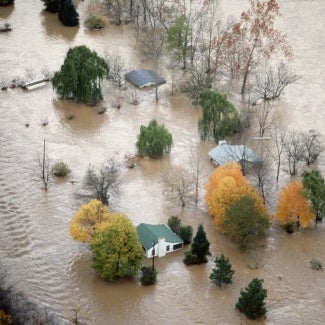Community resilience design resources
Explore resources and organizations to help you design and build a more resilient community through community engagement, risk analysis, inclusive design, and community planning.
Resilient design resources
The resilience of a building and of a community goes hand-in-hand. The health, habitability, and function of a building are largely dependent upon the community’s services, infrastructure, and residents.
Research, data, and community indicators can provide valuable information on environmental, public health, social, and sustainability factors affecting community resilience.
- Community Design & Engagement for Resilience: Learn how stresses such as a lack of affordable housing and social isolation make communities more vulnerable to shocks, and how resilient design and community engagement can increase the social and economic resilience of a community.
- B106 Pro Bono,On Your Terms video and FAQs on the updated B106 & B106-2020: Use this standard form of agreement between owner and architect for building design, construction contract administration, or other professional services provided on a pro bono basis.
- Sustainable Communities Initiative (SCI) Resource Library: This library includes tools, reports, fact sheets, and case studies developed by SCI grantees, HUD, and its Capacity Building partners.
- NIBS: A Roadmap to Resilience Incentivization: Explore an overview of public and private incentives to promote upgrading existing infrastructure and guide the high-performance design of new infrastructure.
- Chapter 8, Engaging Community: Part of AIA's Guides for Equitable Practice, this chapter explores how engagement leads to a more equitable built environment and acknowledges the challenges of community engagement from years of inequitable practices in architecture and beyond.
- International Association for Public Participation (IAP2): The association offers professional development in public participation.
- Equity-Centered Community Design (ECCD): Created by Creative Reaction Lab, ECCD is a creative problem-solving process based on equity, humility-building, integrating history and healing practices, addressing power dynamics, and co-creating with the community.
- Pomegranate Center: To support healthy, productive engagement, this set of Ground Rules for Collective Creativity was developed by the Pomegranate Center.
- Web of Actors and Resources: Practitioners can utilize this tool to understand the network in which project stakeholders exist and operate; identifying resources as well as positive and negative relationships that will need to be navigated for project success.
- Partnership Toolkit: Access guidance on developing successful partnerships.
- Livability Index: This tool scores community resources in seven categories: housing, neighborhood, transportation, environment, health, engagement, and opportunity. Designers can use this tool to understand the existing strengths and weaknesses of a community.
- CDC social vulnerability index: Uses 15 U.S. census variables to help local officials identify communities that may need support before, during, or after disasters.
- FEMA National Risk Index: An online tool and dataset that uses an interactive map to allow users to visually explore the drivers of a community's natural hazard risk, analyzing social vulnerability and community resilience at a county and Census tract level.
- Universal Design: Explore the principles and benefits of universal design; including case studies.
- DeafSpace: A catalog of over 150 distinct DeafSpace architectural design elements that address the five major touch points between deaf experiences and the built environment: space and proximity, sensory reach, mobility and proximity, light and color, and acoustics.
- Community Resilience Planning Guide: Volume I describes the six-step planning process and provides a worked example to illustrate the process. Volume II describes how to characterize the social and economic dimensions of the community, dependencies and cascading consequences, and building and infrastructure performance. For step-by-step guidance, visit the Community Resilience Planning Guide for Buildings and Infrastructure Systems Playbook.
- Community Resilience Planning Resources: These resources include defining vulnerabilities, involving community members, and designing for resiliency.
- ARUP City Resilience Index: This international framework can help cities understand and measure their capacity to endure, adapt, and transform.
- Ready For Tomorrow: Seven Strategies for Climate-Resilient Infrastructure: Convened by the Hoover Institution, this paper is a yearlong collaboration of diverse perspectives that lays out seven strategies for developing more climate-resilient infrastructure.
- Washington Survey of State Land Use and Natural Hazards Planning Laws: A survey by the American Planning Association that examines the relationship between comprehensive plans and local zoning ordinances in the context of state-level natural hazards planning.
- Adapting Infrastructure and Civil Engineering Practice to a Changing Climate: A discussion by the Committee of Technical Advancement of ASCE on the potential significance of climate change to engineering practice.



